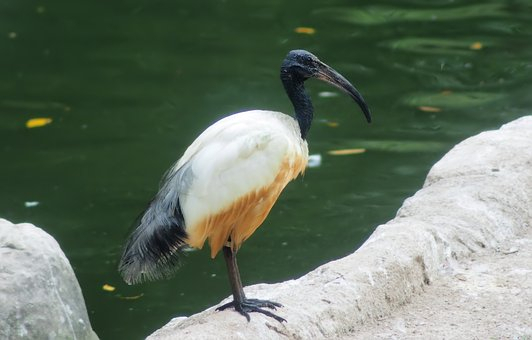
It is well known that ibises were revered in the mystic lands of ancient Egypt. But it is not so well known that many 'sacred' Ibises were gathered from their natural breeding habitats and then sacrificed according to rituals, says a recent study published in the journal PLOS ONE by Sally Wasef of Griffith University, Australia and colleagues. The ibises would be mummified and stuffed into Egyptian catacombs.
The birds were sacrificed between 664BC and 250AD to the deity Thoth. They were worshiped and later mummified. Historians have seen these mummified birds stacked across rows and rows in the age-old Egyptian sites. The stuffed birds were stacked from top to bottom in the catacombs, for kilometres, adding up to millions.
How exactly did the Egyptians manage to get access to these birds? It is not clear. Some ancient texts hint that they engaged in long-term farming and domestication.
A scientific team headed by Wasef collected samples of DNA from 40 mummified Sacred Ibis samples. They were taken from six Egyptian catacombs about 2500 years ago as well as 26 modern specimens from across Africa. They found that 14 of the mummies and all the modern specimens showed total mitochondrial genome sequences. They yielded information that made the researchers compare genetic diversity between wild and the sacrificed collections.
Strangely, the genetic diversity of the mummified ibises inside the catacombs as well as between them has not been found to be too different from modern wild populations. One surmise was that if the ibises had been domesticated and farmed, they would have led to low genetic diversity, due to interbreeding within the restricted populations. However, scientists have found the opposite. The genetic diversity of mummified Ibises inside as well as between catacombs was just like modern wild populations.
What does this indicate? One idea goes that it was not centralized farming by short-term taming that was followed. Most probably the scientists farmed these sacred ibises in their natural habitats or maybe bred them only during the sacred seasons, when they had to be sacrificed.
The authors add: "We report the first complete ancient genomes of the Egyptian Sacred Ibis mummies, showing that priests sustained short-term taming of the wild Sacred Ibis in local lakes or wetlands contrary to centralised industrial scale farming of sacrificial birds."
Hence, what emerges clearly from DNA samples is that contrary to what has been believed, sacred ibises were not domesticated or bred in farms. They were collected from their wild natural habitats for sacrifice and mummification.









